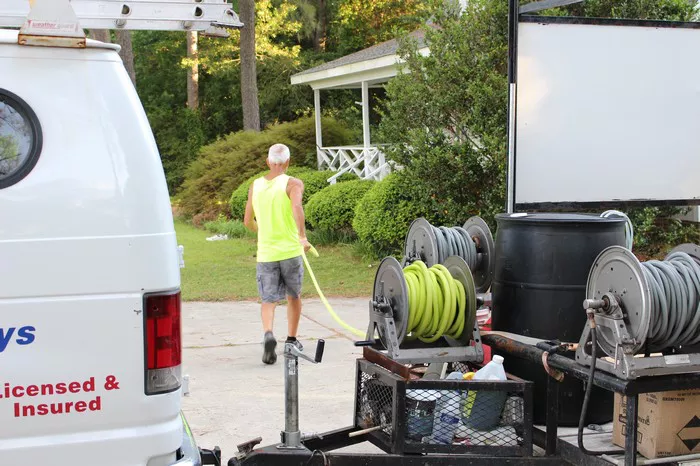Electric pressure washers have become indispensable tools in maintaining cleanliness and hygiene, whether it’s for domestic or commercial use. These machines utilize high-pressure water streams to blast away dirt, grime, and stains from various surfaces efficiently. From cleaning driveways and sidewalks to washing vehicles and outdoor furniture, electric pressure washers offer convenience and effectiveness.
Why Won’t My Electric Pressure Washer Start?
Imagine the frustration of preparing to tackle a cleaning task only to find that your electric pressure washer refuses to start. This scenario is not uncommon, and several factors could be behind this issue. Let’s explore some potential causes and solutions:
Possible Causes:
1. Power Supply Issues:
Check if the power cord is properly connected to a functioning power outlet.
Ensure that the power source meets the voltage requirements of the pressure washer.
2. Faulty Power Switch:
Inspect the power switch for any signs of damage or malfunction.
If the switch appears defective, it may need to be replaced by a professional.
3. Clogged or Damaged Hose:
Examine the hose for any kinks, twists, or blockages that may impede water flow.
Replace the hose if it is damaged or excessively worn.
4. Trigger Gun Malfunction:
Test the trigger gun to see if it is functioning correctly.
Replace the trigger gun if it fails to activate the pressure washer.
5. Water Supply Problems:
Ensure that the water supply valve is fully open.
Check for any obstructions or leaks in the water supply line.
6. Pump Issues:
Inspect the pump for signs of damage, such as leaks or worn seals.
Clean or replace the pump inlet filter if it is clogged with debris.
Proposed Solutions:
1. Verify Power Supply:
Double-check the power cord and outlet to ensure a secure connection.
Consider using a different outlet or extension cord to rule out power supply issues.
2. Test the Power Switch:
If the power switch is suspected to be faulty, consult a professional for repair or replacement.
3. Inspect and Maintain the Hose:
Regularly inspect the hose for wear and tear, and replace it as needed.
Clean the hose and nozzle regularly to prevent clogs and blockages.
4. Check and Replace Trigger Gun:
If the trigger gun is malfunctioning, purchase a replacement from the manufacturer or authorized dealer.
5. Ensure Proper Water Supply:
Confirm that the water supply valve is fully open and providing adequate pressure.
Address any issues with the water supply line promptly to maintain uninterrupted operation.
6. Service the Pump Regularly:
Follow the manufacturer’s recommendations for pump maintenance, including cleaning and lubrication.
Schedule professional servicing if the pump shows signs of wear or damage.
Preventive Measures:
1. Regular Inspection and Maintenance:
1. Routinely inspect the pressure washer components for any signs of wear, damage, or leaks.
2. Clean and lubricate moving parts to ensure smooth operation and extend the lifespan of the machine.
2. Proper Storage:
1. Store the pressure washer in a dry, well-ventilated area away from direct sunlight and extreme temperatures.
2. Drain the water from the pump and hoses after each use to prevent freezing and damage.
3. Correct Usage:
1. Use the pressure washer according to the manufacturer’s instructions and recommendations.
2. Avoid prolonged exposure of the machine to high-pressure water or abrasive chemicals that may cause damage.
4. Importance of Regular Maintenance and Correct Use:
Regular maintenance and correct usage are crucial for ensuring the reliable performance and longevity of your electric pressure washer. By following the manufacturer’s guidelines for maintenance, storage, and operation, you can minimize the risk of startup issues and other problems. Additionally, seeking professional help when needed and staying proactive in addressing maintenance tasks can help you avoid costly repairs and downtime.
Summary:
When your electric pressure washer refuses to start, it can disrupt your cleaning routine and cause frustration. By understanding the possible causes and implementing the proposed solutions, you can troubleshoot the issue effectively. Remember to prioritize preventive measures such as regular maintenance, proper storage, and correct usage to prevent future problems.
In summary, the main causes of electric pressure washer startup issues include power supply problems, faulty components such as the power switch or trigger gun, and issues with the water supply or pump. By verifying the power supply, inspecting and maintaining the hose, checking the trigger gun, ensuring proper water supply, and servicing the pump regularly, you can address these issues and keep your pressure washer in optimal condition.
FAQs:
Q1: How often should I service my electric pressure washer?
A1: It’s recommended to service your electric pressure washer at least once a year or more frequently if you use it frequently or in demanding conditions. Consult the manufacturer’s guidelines for specific recommendations.
Q2: Can I use my pressure washer with well water?
A2: Yes, you can use a pressure washer with well water, but it’s essential to check the water quality and address any issues such as sediment or mineral buildup that may affect performance. Consider using a water filter or softener if necessary.
Q3: What should I do if my pressure washer loses pressure during operation?
A3: Loss of pressure can be caused by various factors such as clogged nozzles, air leaks, or pump problems. Start by checking for clogs and leaks, and if the issue persists, consult a professional for further diagnosis and repair.

